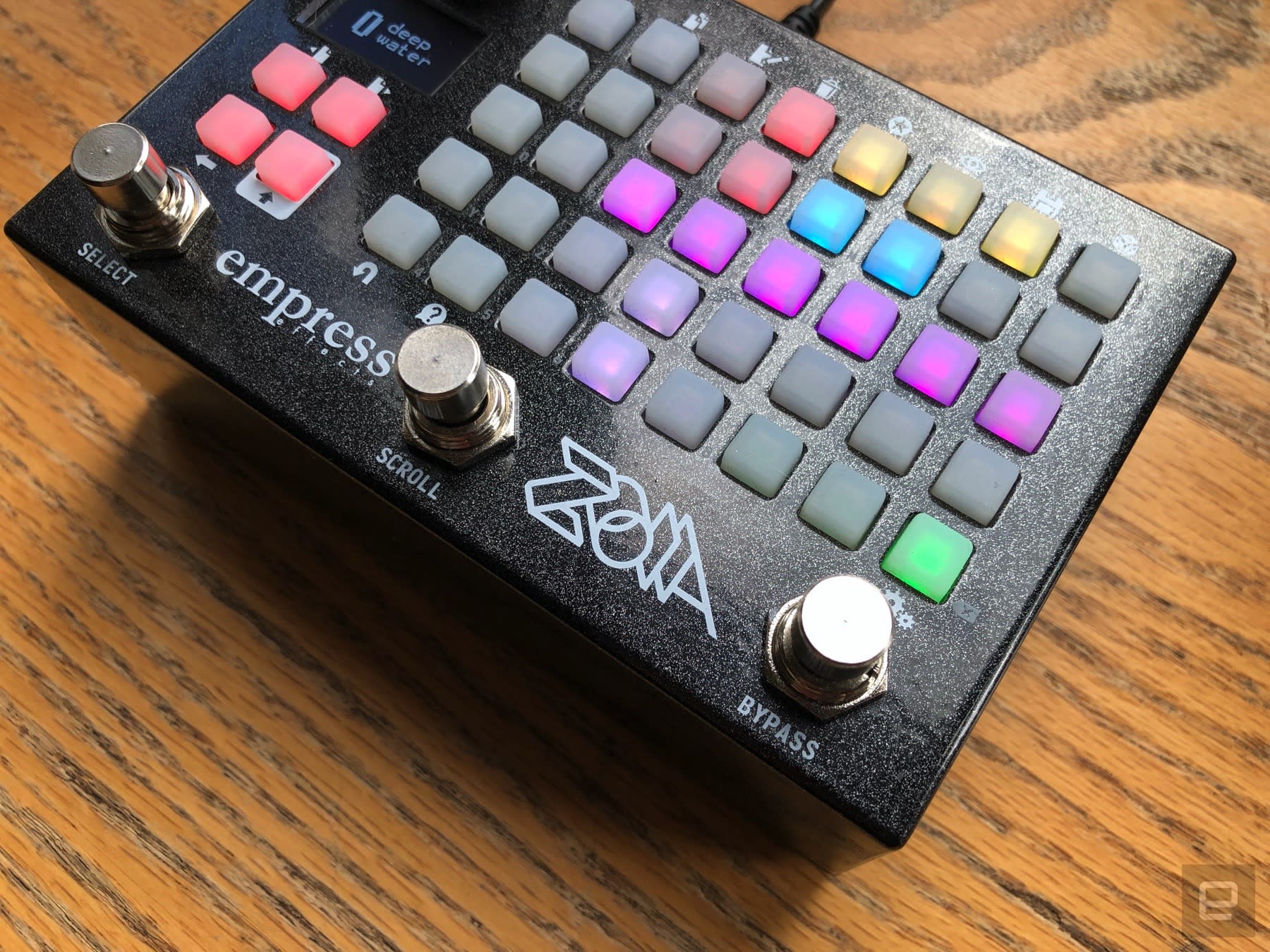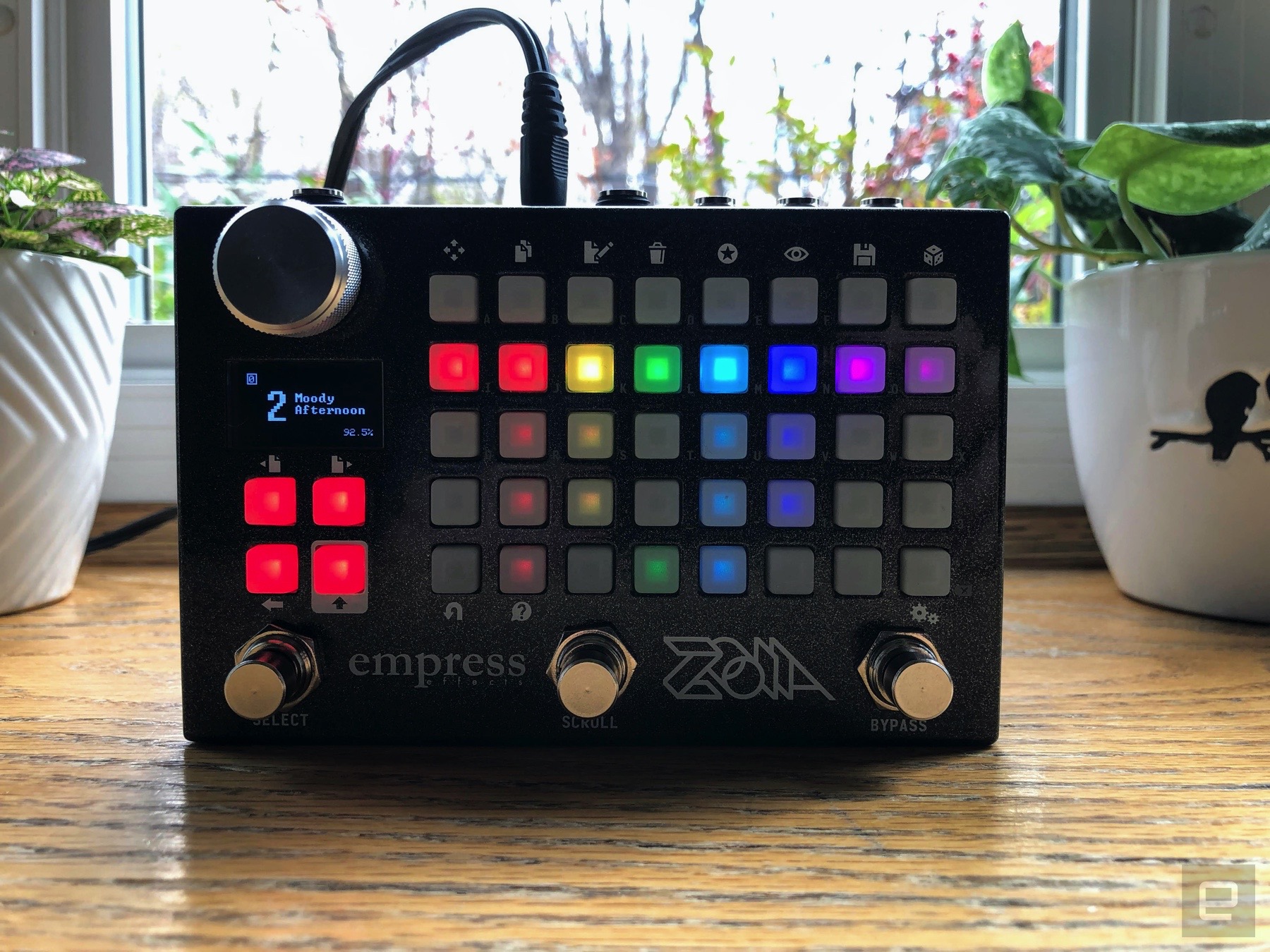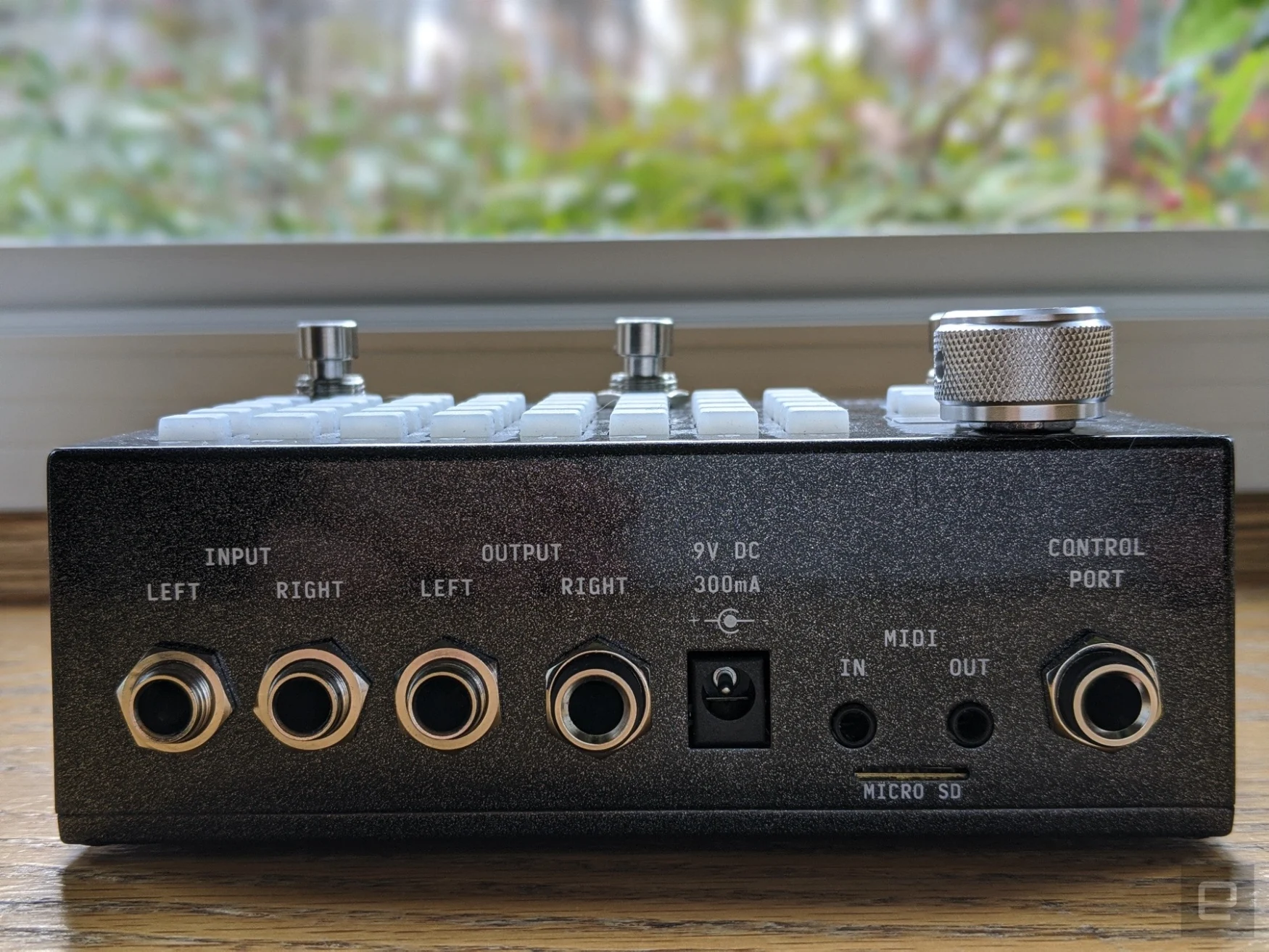The world of guitar effects is weird. It’s a place where old-school analog gear and crazy high-tech digital pedals are both fetishized with the same amount of zeal. Some companies, like Empress Effects, even try to straddle both worlds simultaneously. Its earliest pedals, like the Empress Tremolo, were largely analog affairs, with some digital smarts hanging around the periphery of the signal path. Some of its later pedals, like the Reverb and Echosystem, though, fully embraced the digital world. They’re deep-effects stations with an insane number of features and plenty of unique sounds. They are also part of an increasingly popular type of effects processor that tries to cram the complexity and richness of a rack-mount unit into something small enough to fit on a pedalboard.
But part of what Empress has built its reputation on is a willingness to innovate and experiment. For its newest pedal, the ZOIA, it created something that doesn’t fit neatly into the category of “effect pedal.” It certainly looks like one. And it certainly can be used as one. But Empress actually bills the ZOIA as “a modular synthesizer in pedal form.” That’s not a bad description, because while the ZOIA is clearly built for guitarists, its core functionality is much closer to that of a modular synth. (To be clear: The ZOIA plays just as well with a synth as it does a guitar.)
Empress Effects ZOIA

Pros
- Almost limitless combinations of effects and modules
- Control and customization are unmatched
- Large community building unique effect patches
- Regular updates deliver new features and bug fixes
Cons
- Large patches can get cumbersome
- Patch management is a chore
In some ways the ZOIA is not unlike Critter & Guitari’s Organelle. It’s a do-it-all music-making box that lets people build their own effects, synths and loopers. Like the Organelle, it rewards patience. But that’s where the similarities end. For one, the Organelle is a keyboard-based instrument, not a pedal — obviously. And while the Organelle M asks you to connect a monitor, mouse and a keyboard to build patches in Pure Data, the ZOIA requires no coding. Instead you place and connect modules using the five-by-eight grid of RGB pads on the front.

You can certainly plop down an audio-in module and an audio-out module and stick a reverb between them, but the ZOIA’s real power is in getting the various tools and effects to interact with one another in new and interesting ways. And many of the modules are not your standard guitar-effects fare; they’re far more likely to be found on a synthesizer, like the LFO, ADSR (attack, decay, sustain, release) and slew limiter.
If you’ve never dabbled in the world of modular synths, the ZOIA can be a bit intimidating. At first blush it’s a bewildering array of lights and buttons. And while it comes preloaded with 64 presets, it won’t make any sound when you load up a blank patch: You have to actually place and connect audio-in and audio-out modules first.
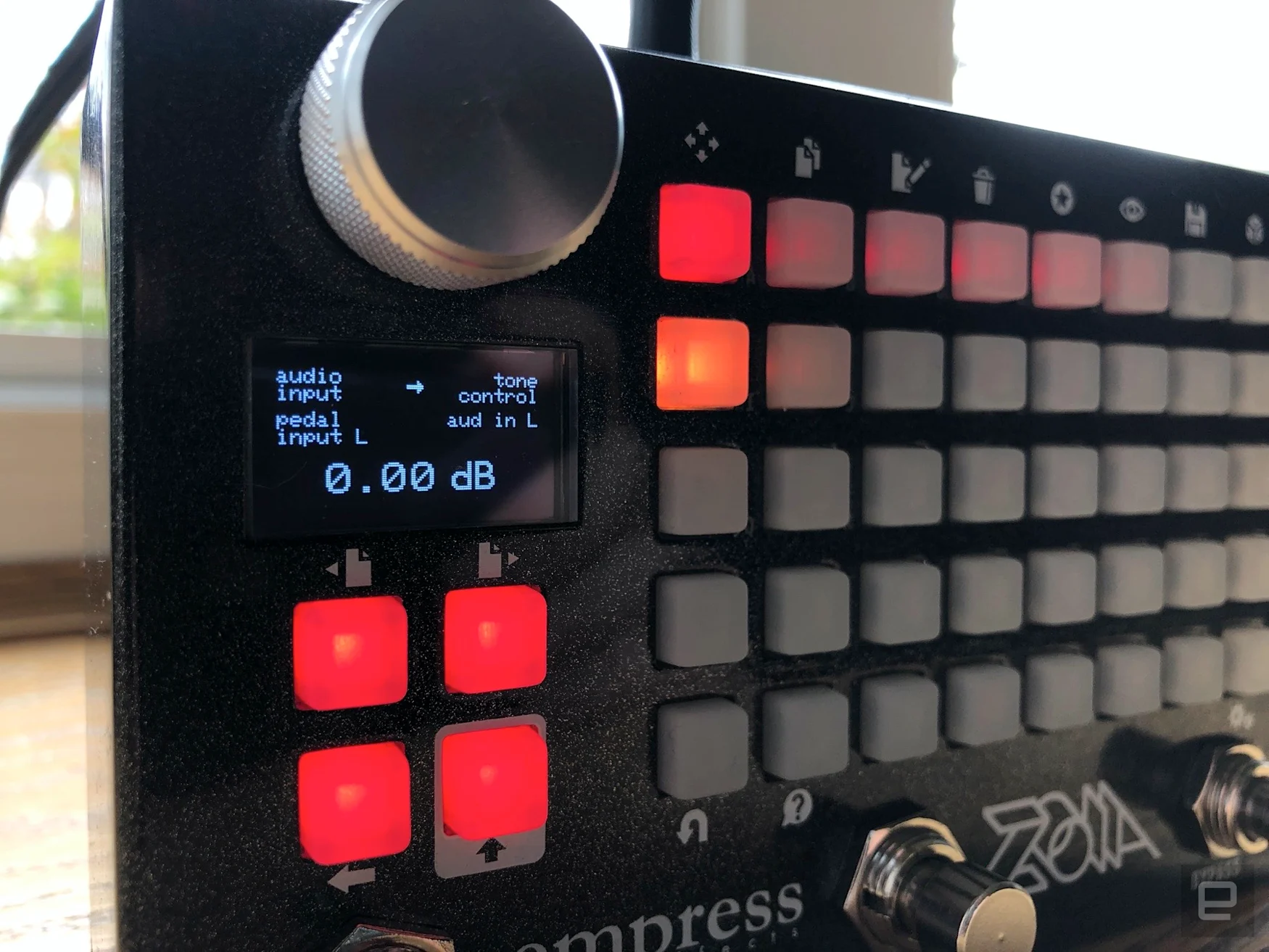
I’ll admit that when I first played with the ZOIA at the Brooklyn Stompbox Exhibit last summer, I was overwhelmed and confused. This little box made all sorts of crazy sounds, but standing in a crowded event space with dozens of other gear nerds wasn’t exactly conducive to getting a feel for the pedal.
Back at home, with time to explore (and, more important, a manual), things started to make sense.
Empress made a lot of clever design choices when it comes to the interface that make navigating it surprisingly easy once you’ve learned its quirks. Pressing an empty spot in the grid immediately brings the module-selection menu up on the small OLED screen. There are more than 80 to choose from (including more than 20 dedicated effects), but they’re broken down into commonsense categories, which make it pretty simple to find what you’re looking for. Different modules take up a different amount of space on the grid, with each button (or block) representing an input, an output or a variable that can be changed. You connect those various ins and outs by pressing the two buttons at the same time.
For instance, let’s say you want to build a simple reverb patch. First you’d lay out your modules on the grid by pressing buttons that are unlit and selecting an audio in, an audio out and a reverb (go with Lite to keep things simple). Assuming you’re putting a guitar through the pedal in mono, first you’d press the “pedal input L” button and, without letting go, press the “input L” button on the reverb module. Then you’d press and hold the “output L” block in the reverb module while pressing “pedal output L” in the audio-out module. (You could also change the modules to mono and remove the second inputs and outputs, but let’s keep things simple.)
Now you have a reverb: Congrats!
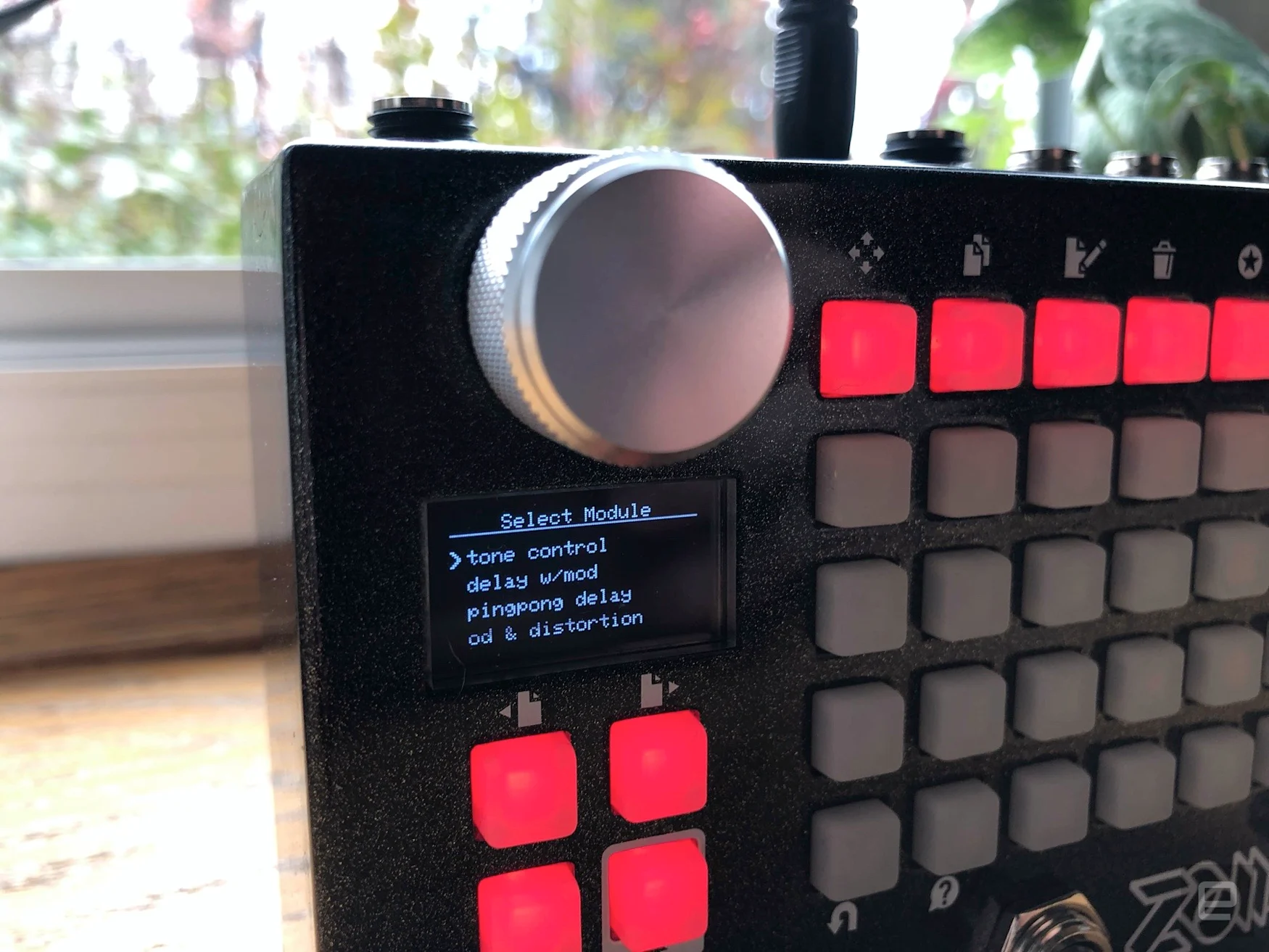
As you play, you’ll notice something: The lights of the audio in and audio out will brighten and flicker in response to your playing. They’re reflecting the actual amount of signal flowing through that particular block. This is true of all the various modules. If you press that third button in the Reverb Lite module, you’ll bring up the decay-time control. You change this by turning the one giant knob on the front. As you turn up the decay time, the block will brighten. Also, if you press in an input or output block on a module, the other blocks it’s connected to will light up (the output on the reverb and the pedal output, for instance).
In the abstract that might still sound like a confusing mess of lights, but it’s actually a pretty good way to visualize your signal as it flows through the pedal and helps quickly locate all the connections you’ve made in a patch.
But there are some limitations that no amount of clever design can overcome. The biggest (figuratively and literally) is that knob. To keep things pedalboard-friendly, some sacrifices had to be made, and while most effects pedals will have a number of knobs for tweaking parameters, the ZOIA has just one. So when you want to rein in those reverb tails, you’ll have to press the decay-time button and turn the encoder counterclockwise. Then, if you want to change the wet/dry mix, you’ll have to press that block and turn the knob again. It’s far from ideal, especially since it’s basically impossible to identify what a block does just by glancing at it. And on complex patches there can be dozens, or even hundreds, of variables to contend with.
